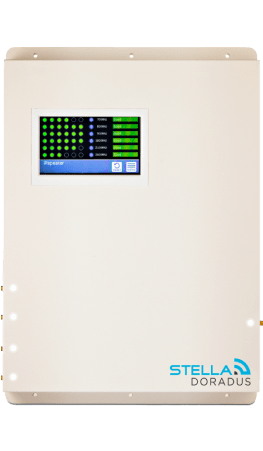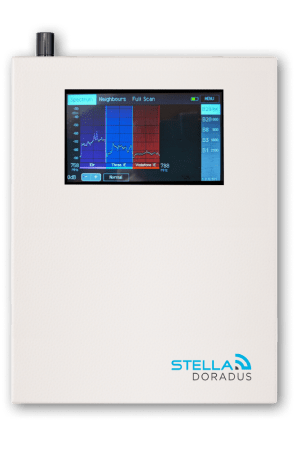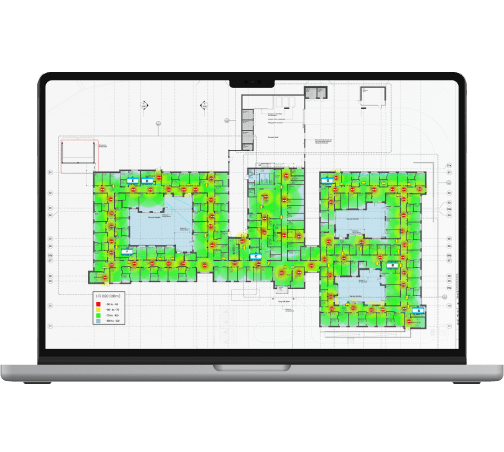How do pagers work?
Pagers, invented in the 1940s, allow you to broadcast one-way communication to many people at the same time. To send a message you must call a phone line and leave a short message with an operator. The operator then relays the message to the other pagers. The person who receives the message cannot reply on their pager. Instead, they need to find a phone to call back the person who sent the message.
Why would a hospital use this decades old, one way communication technology?
Hospitals have notoriously bad mobile and WiFi coverage. Hospitals generally consist of a sprawling campus with long corridors. The buildings are made with concrete, steel and glass. Furthermore, the walls are usually covered with sheets of insulated foil, and the windows are usually double glazed with “K glass“. These types of large, well insulated buildings almost entirely block mobile phone signal.
Pagers do have some advantages. For one, the battery can last several weeks. In a hospital environment, where time is precious, this is a big advantage. Another advantage is that the wireless signal of a pager can more easily penetrate into the deep recesses of the hospital, ensuring that critical messages reach their destination.
Why Pagers are not suitable in today’s modern hospitals.
Pagers are slow, they offer a one-way communication and allow users to convey only a short message. This can prove very frustrating for staff when a medical professional might have to leave a sick patient to go and find a phone to respond to a message. In fast paced environments where minutes can be critical for patients this is not good enough. For hospitals to offer the best care to their patients, medical staff need to be able to communicate quickly and efficiently while they are in the hospital.
Increasingly, hospital staff use i-pads and other mobile devices to access patient information, hospital databases and even just to be contactable by phone. These days many mobile systems require constant connection to the “cloud” at all times, and this trend will only increase as the technology grows. Hospitals that cannot provide mobile coverage will not be able to ensure the high quality and efficient services that people have come to expect.
In 2019 the British health secretary Matt Hancock announced that the NHS would ban pagers from hospitals. The aim was that in the coming years they wanted to phase out pagers and switch to mobile phones instead. It is 2022, and many hospitals in the UK and Europe are still working to phase out this antiquated communication system.
What is the solution?
Many hospitals throughout Europe are using Stella repeaters to ensure that mobile signal is distributed throughout their hospitals. Stella offers a modular system that can be customized to fit the unique layout requirements of each hospital.
What are the benefits of using Stella to amplify mobile signal in healthcare facilities?
- Staff can communicate on their mobile phones – Stella supports voice signal as well as 3G/4G/5G data
- Amplifies all operator’s networks – This allows everyone within the hospital to use their own chosen mobile provider.
- Supports unlimited users – The Stella system itself does not introduce any limit. Any limit is set by the operator tower instead. This limit is in the range 300+ simultaneous users.
- Quiet on operator network – StellaHealthcare have designed smart repeater technology that does not interfere with signals from operator masts. It allows hospitals to take the signal from masts outside the building and distribute this signal where required internally.
- Cyber Security – There is no username and password management as required with WiFi. Everyone can use their own mobile data plan to communicate.The hospital does not need to expose its WiFi network to its staff or the public.
- Zoned Solution – Stella offers a zoned amplification solution where you can pick what areas you need to amplify signal.
- Cost effective and environmentally friendly to run – Stella repeaters use a passive antenna system. This reduces the overall energy of the system, which results in a smaller carbon footprint.
- Patient Experience – The system allows patients to stay connected with friends and family, raise an alarm in case of an emergency, and stay entertained consuming media on their mobile devices. All thanks to the amplified 2G, 3G, 4G and 5G.
- Monitored and Managed Solution – Stella can actively monitor your system remotely. We respond to alerts that warn us of any potential issues, even something as simple as a power supply accidentally plugged out. We keep the system performing optimally at all times.





